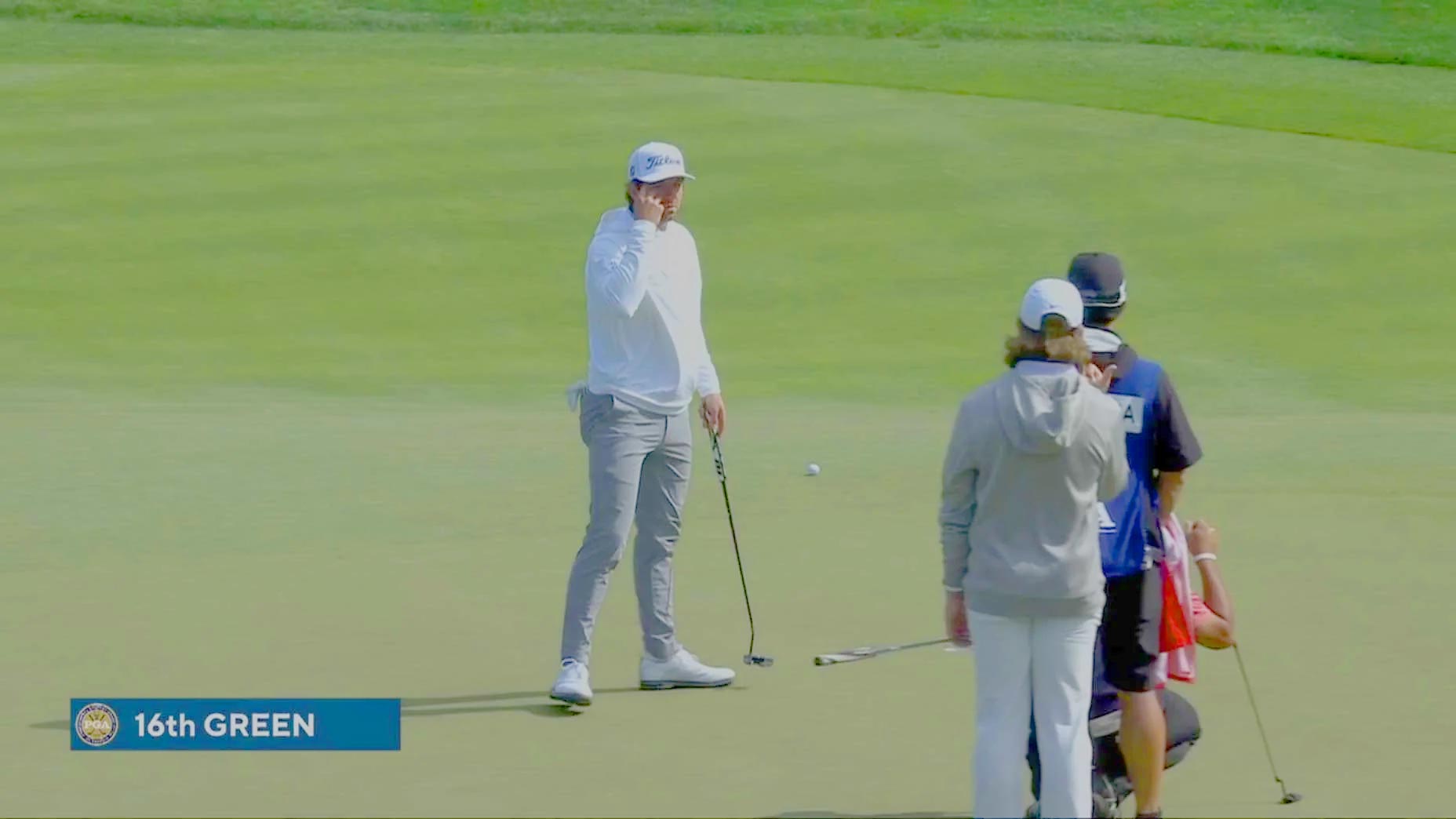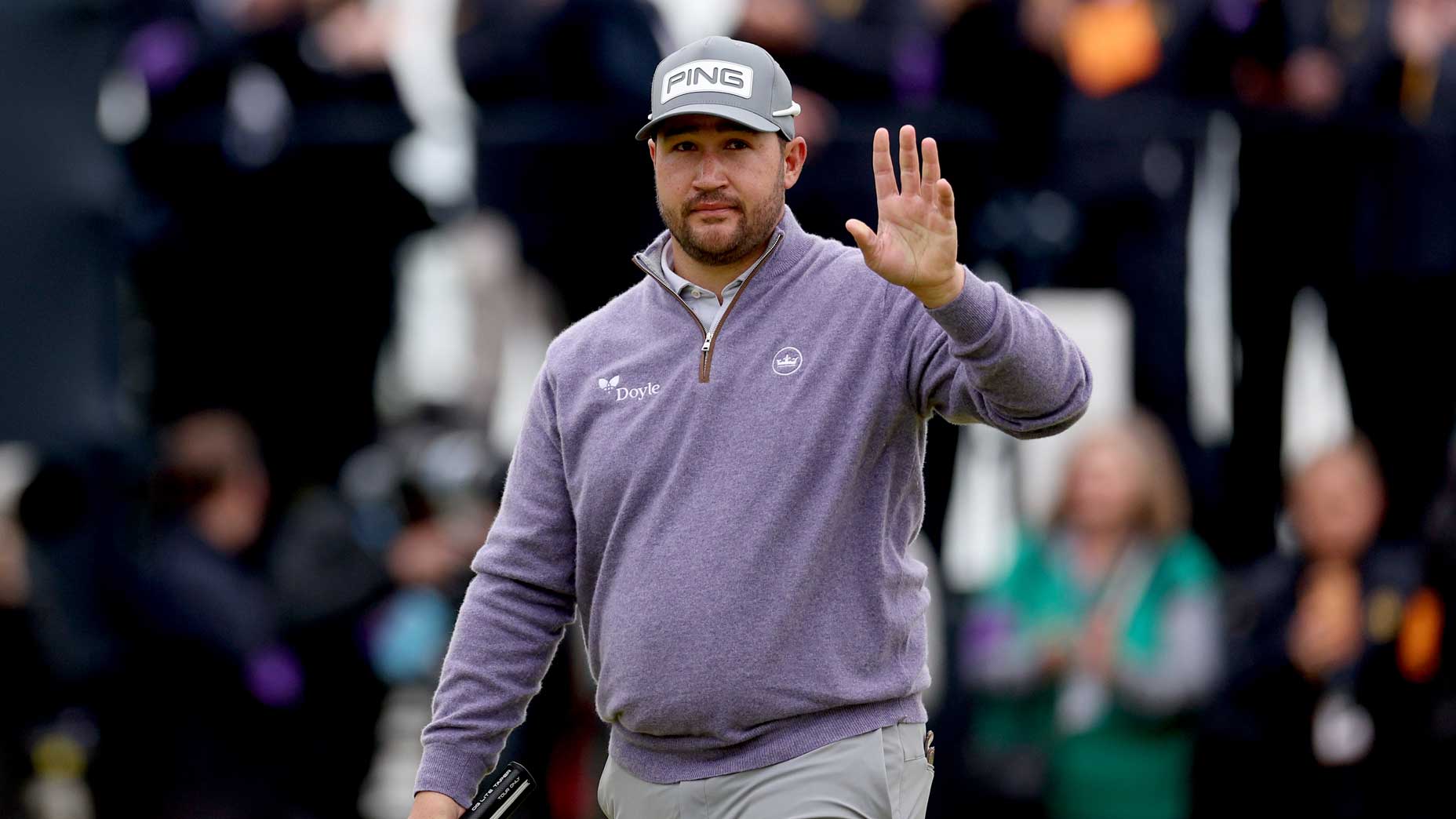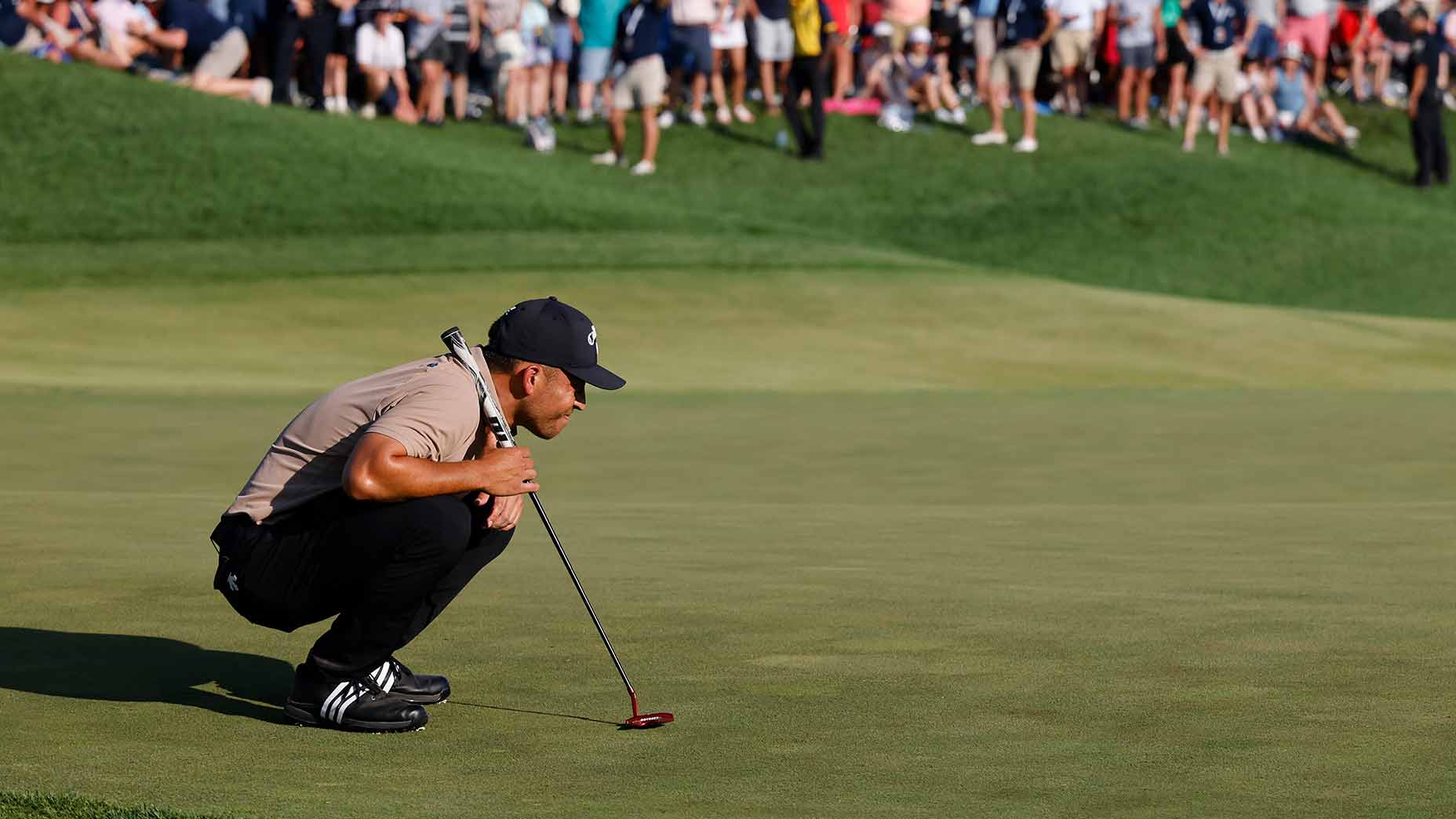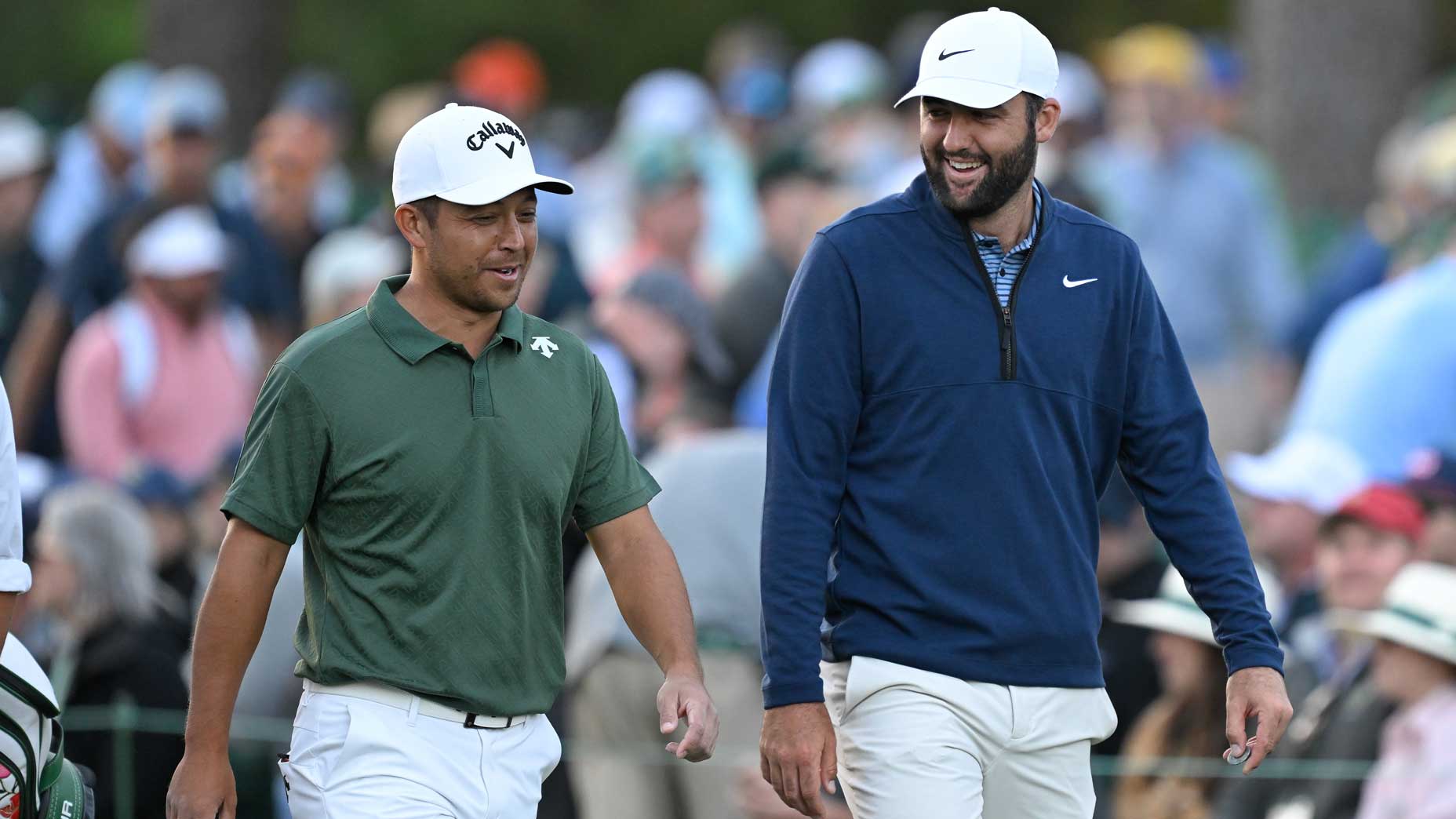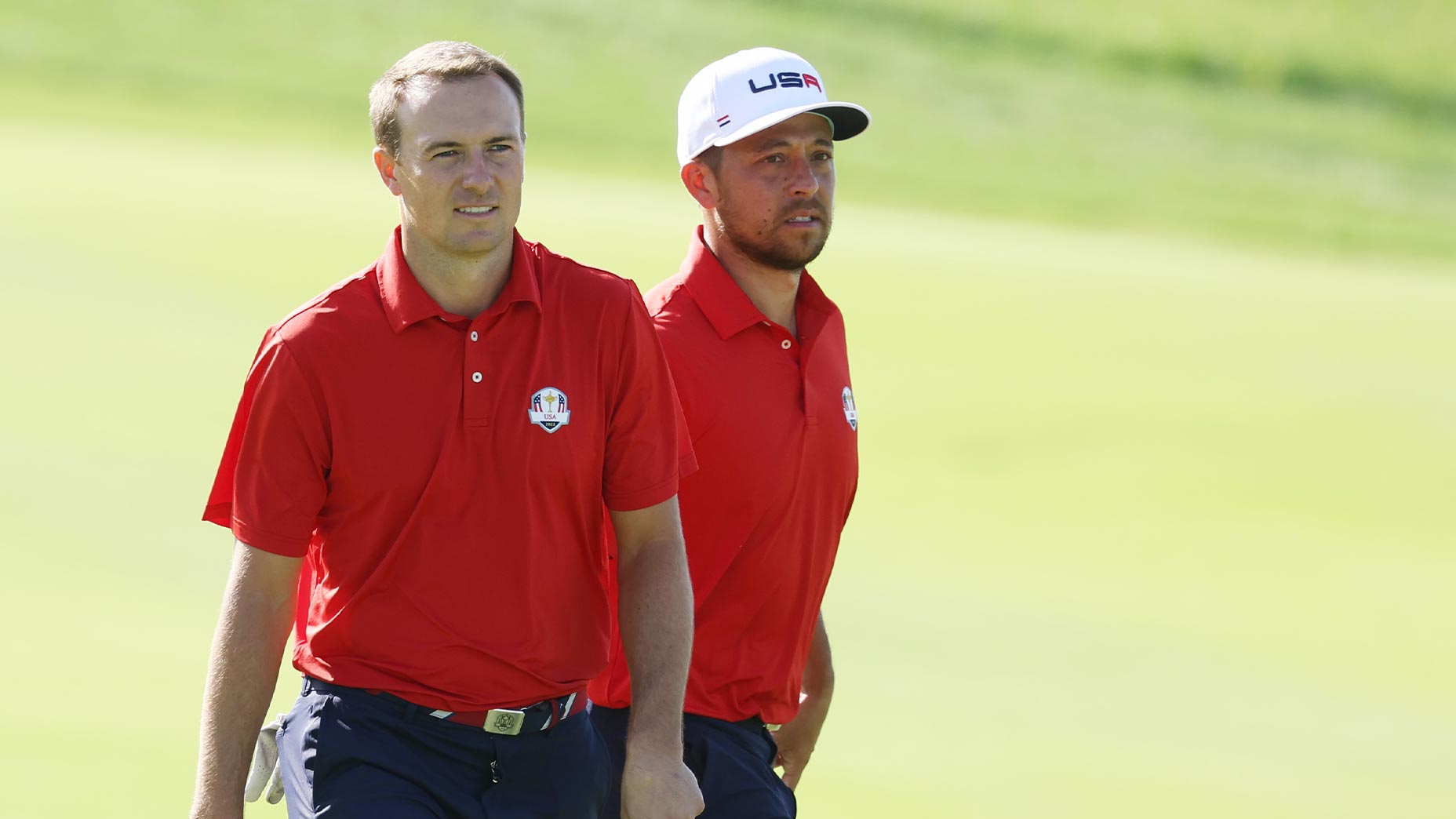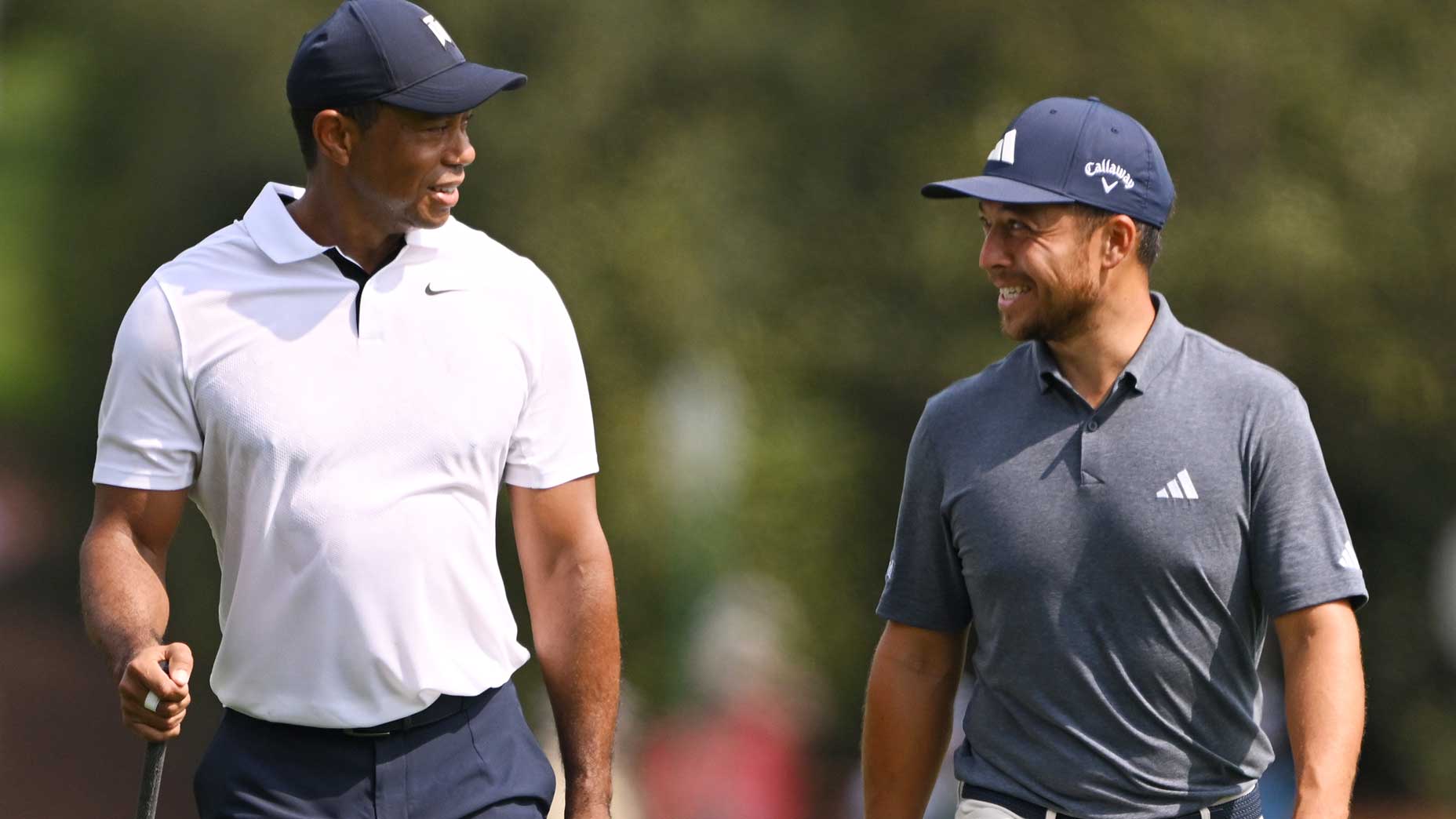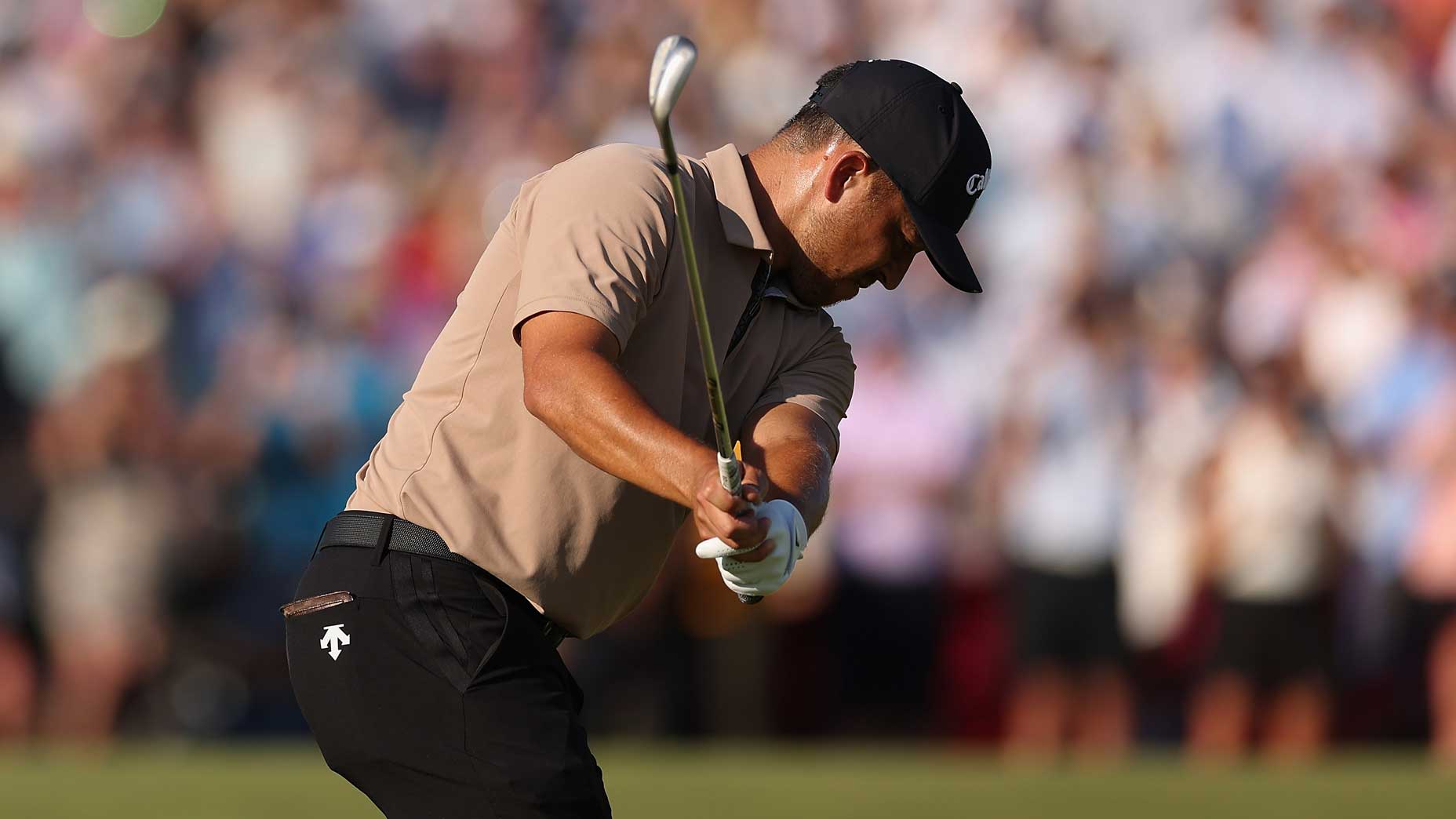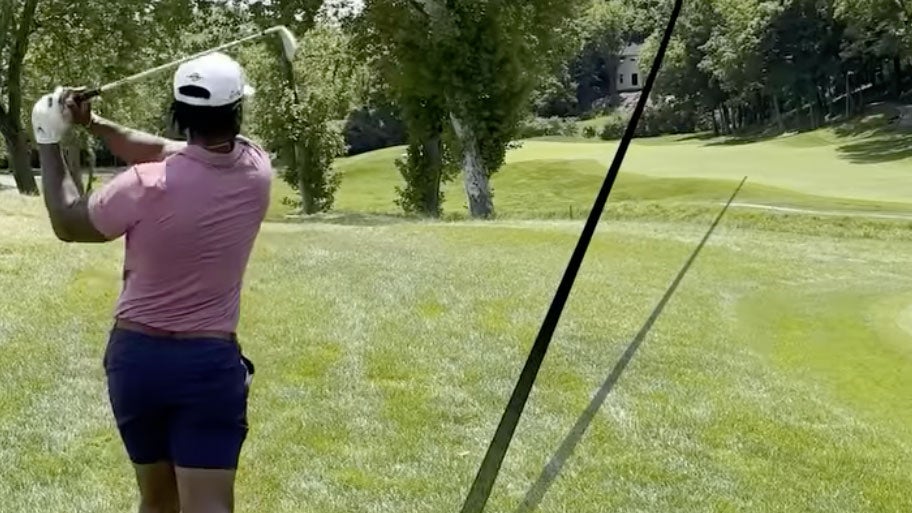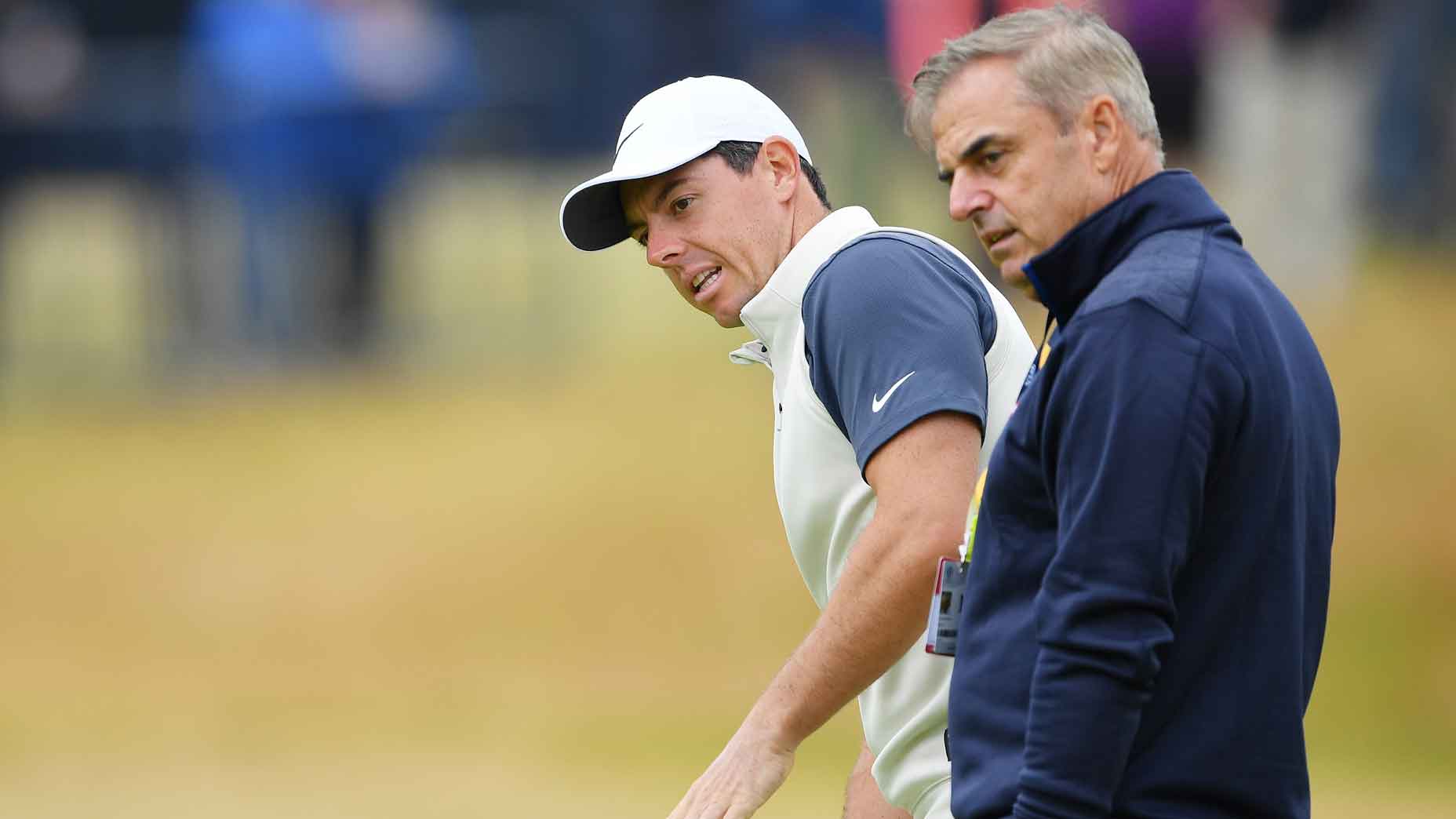Phil Mickelson nearly commits costly rules gaffe before official saves him

Phil Mickelson explains his opinion to two rules officials during the second round of the PGA Championship Friday.
Jack Hirsh
Rules disputes almost always begins with a misplayed shot. And for Phil Mickelson on Friday, that was exactly the case.
Mickelson tugged his drive on the par-4 6th hole at Oak Hill into the swampy area of Allen’s Creek that nearly ate Tom Kim alive Thursday evening. Kim’s muddy demise proved to be a useful warning to other pros: Don’t bother. Drop and move on. So Mickelson began to go through his normal processes.
“Two club-lengths on red, correct?” he shouted out to Rickie Fowler, who was up in the fairway. Fowler flashed him a thumbs-up. Mickelson had already stuck a tee into the ground in the first cut, which was straight back on the line of entry into the hazard. He also stuck a tee about one foot into the fairway, dropping on the short grass about 250 yards from the hole.
Mickelson was already rehearsing the swing he planned to take when a rules official crossed the hole to halt him. Mickelson, it seemed, had taken an improper drop.
“I don’t think that’s right,” Mickelson said. “In fact I know it’s not. You get a full semicircle on every drop.”
Up until six months ago, Mickelson would have been right. Rule 17.1d states that taking a drop from a red-staked penalty area offers players a semicircle of area not nearer the hole that is one club-length in radius.
“Not going back on line,” the rules official said.
“You mark your spot, and then you get a full club length,” Mickelson contended.
Usually players are upset with a ruling when they don’t know how to proceed and have to listen to orders. Mickelson, on the contrary, believed he knew the rules well enough to enforce this decision himself.
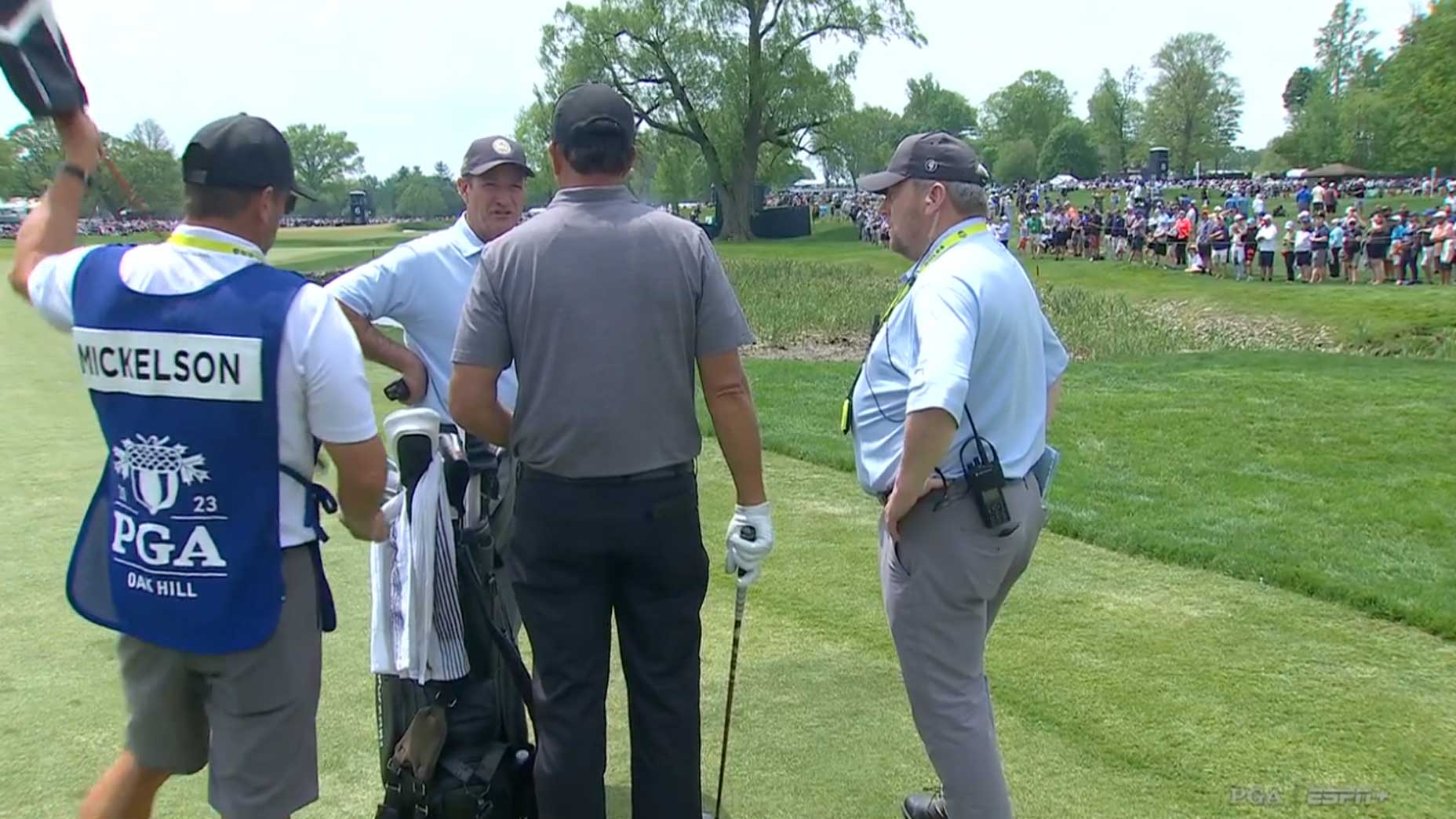
“I appreciate you stopping me and making sure I don’t make a mistake, but I don’t think that’s accurate,” Mickelson said. “I think you get a semicircle on every drop.”
The rules official used his radio to call in another official but went on to explain that the rule Mickelson was referencing changed this year. When taking a drop back from a hazard on the line of where the ball entered it, players do not get an extra one-club-length semicircle to drop within. Instead, they are to drop it at what is called a “reference point” which must be on the line of entry. The ball must come to rest within one club-length of that spot, but cannot be dropped within one club-length of the spot. Kudos to the ESPN microphone operators for staying on the dispute closely enough that viewers could hear every word. After Patrick Cantlay was shown hitting his approach, the cameras cut back to Mickelson, who had been joined by another official.
“That rule changed,” the second official said.
“This year?” Mickelson asked. “I never heard that.”
“It’s okay, you just dropped improperly,” the second official said. “You can go ahead and move it back. You can operate back on the line and drop wherever you want to. But it’s going to be along that line.”
“Thanks for stopping me,” Mickelson said. “I appreciate your help. Thank you.”
What a change in tone! Mickelson wasn’t the only person to be surprised by the ruling. The entire broadcast staff waited on the rules official’s declaration, too.
“You learn something new every day,” one commentator said.
You can count your correspondent as a member of the same camp.
What Mickelson had left with wasn’t exactly desirable. He didn’t want to drop too far back from the first cut, which angled away from the green, making his approach even longer. Mickelson instead took his drop in the first cut and then played a 3-wood from 248 yards, into an 8 mph breeze. His third shot sailed left of the green, narrowly missing the same creek his tee shot ended up in. He would play his way up to the green and two-putt from 30 feet for a double bogey to drop to five over, which is where he would finish the day.
It was a frustrating double bogey, but the result could have been worse. Had Mickelson ended up playing from the edge of the fairway like he originally intended, he would have played from the wrong spot. The improper drop would have been treated similarly to a Cameron Young situation earlier in the round when Young was penalized for not returning his marked putt back to its original spot. The verdict was a two-shot penalty that turned Young’s 73 into a 75 and a sure-fire missed cut.
Two more strokes for Mickelson would have booked him an early flight home from Rochester. Instead, he’ll be around for the weekend, starting his third round at five over, all thanks to the actions of an informed rules official. Lefty provided some thoughts afterward:
“I ended up hitting it in the hazard and took line-of-sight and came back. I didn’t know that they changed the rule this year, whereby you normally could take the point in line and then you have that two-club-length semicircle, and I guess in January they changed that to where you just only get line-of-sight, so the guy came over and saved me a penalty because I had dropped it in the ruling under last year and didn’t realize it had been changed, and he came and saved me a stroke, so I was very appreciative.”

